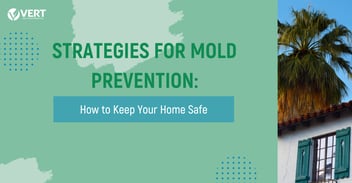How to Spot Mold in Your Home Before It's Too Late
Let's face it; mold is like that unwelcome guest that can sneak into your home unnoticed. What's worse, it can create an unhealthy living environment and cause substantial structural damage if left unchecked. Therefore, understanding how to identify mold is key to maintaining a safe and healthy home.
The Dangers of Mold
Before we dive into the signs of mold, it's essential to understand why it's something to be concerned about. Mold is a type of fungus that grows in moist environments and reproduces by emitting spores that travel through the air.
Exposure to these spores can lead to health issues like:
- Allergic reactions
- Asthma attacks
- Respiratory issues
- In extreme cases, toxic mold exposure can lead to neurological problems or even death.
Mold can also cause structural damage to your home, including:
- Decay and damage to wood surfaces
- Peeling or bubbling paint and wallpaper
- Compromised structural integrity due to prolonged mold growth
Where Mold Can Grow
Now, you might be wondering, "Where should I look for mold?" Well, mold loves damp, dark, and warm environments. Common areas in the home where mold often grows include:
- Bathrooms, especially shower stalls and bathtubs
- Basements and crawlspaces
- Attics with poor ventilation
- Kitchens, near appliances that generate heat and moisture
- Around windows and doors where condensation collects
Signs of Mold in Your Home
Identifying mold early can save you from potential health issues and costly repairs. Here's what to watch out for:
Physical signs:
- Visible mold growth: This might appear as spots or patches of black, white, green, yellow, or brown.
- Wall discoloration: Unexplained stains or discoloration on walls and ceilings can be a sign of mold growth.
Sensory signs:
- Musty odors: Mold often produces a musty smell that can help you detect its presence even if it's hidden.
Health symptoms:
- Frequent allergies or respiratory issues: If you or your family members experience allergies, respiratory problems, or unexplained health issues, it might be due to mold.
Testing for Mold
If you suspect you have a mold issue, it's wise to consider professional mold testing. At Vert Environmental, we provide comprehensive mold testing services to give you peace of mind.
Professional mold testing not only confirms the presence of mold but can also identify the type of mold and the extent of your mold issue. This information is crucial in effectively addressing the problem and preventing future growth.
What to Do if You Find Mold
If you discover mold in your home, it's essential not to disturb it, as this can release mold spores and exacerbate the problem. Here's what to do instead:
- Don't attempt to clean the mold yourself; many household cleaners don't kill mold and can even make the problem worse.
- Stay out of the affected area and restrict it as much as possible.
- Turn off your HVAC system and fans to prevent the spread of spores.
- Contact a professional mold testing company like Vert Environmental.
Preventing Mold Growth
Prevention is the best approach when it comes to mold. Here are a few tips:
- Control moisture: Use dehumidifiers and air conditioners to keep your home's humidity below 60%.
- Ventilate: Make sure your home is well-ventilated, especially in high-moisture areas like the bathroom and kitchen.
- Insulate: Insulate windows, pipes, exterior walls, roof, or floors where there is a potential for condensation.
- Maintain: Keep your home clean, especially areas where mold is likely to grow.
In conclusion, being aware of the early signs of mold and acting promptly can save you from health risks and potential damage to your home. Remember, when it comes to mold, it's better to be safe than sorry.
If you suspect mold in your home, don't hesitate. Visit www.vertenviro.com and schedule a professional mold testing with Vert Environmental today. Protect your home and your health from the risks of mold.

